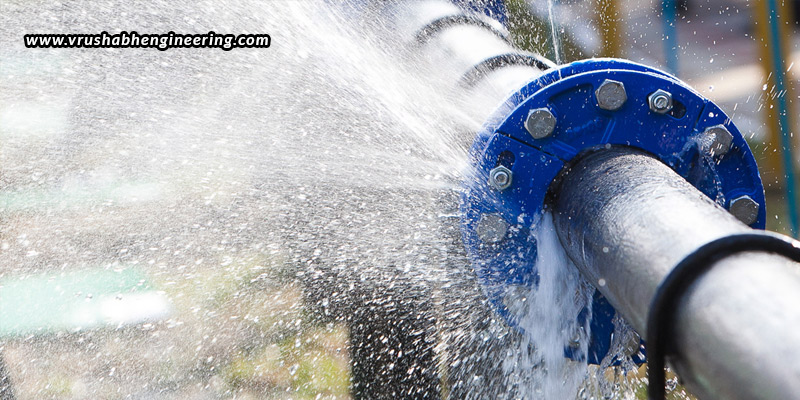Gaskets are essential components in industrial settings, serving to prevent leaks and maintain the integrity of mechanical systems. They establish a reliable seal between two surfaces, facilitating the efficient operation of equipment such as pipelines, pumps, and valves. Nevertheless, failures in gaskets can result in significant repercussions, including fluid leaks, damage to equipment, heightened maintenance expenses, and potential safety risks. It is crucial to comprehend the typical causes of gasket failures and the strategies to mitigate them in order to uphold system efficiency and reliability. This blog examines the most prevalent gasket failures, their underlying causes, and recommended practices to enhance the lifespan of gaskets in industrial applications.
The most common causes of gasket failures
Gasket failures can arise from various factors, including material selection and installation mistakes. The following are some prevalent causes –
Material incompatibility
Material incompatibility is a primary factor contributing to gasket failure, as the use of inappropriate materials can lead to swift deterioration. Gaskets intended for high-temperature applications must endure extreme heat without softening or cracking, making materials such as graphite and PTFE suitable options. In chemical processing environments, it is essential for gaskets to resist harsh chemicals, with PTFE and Viton providing exceptional durability. For high-pressure systems, metallic gaskets like stainless steel or Inconel are necessary to withstand significant forces. A failure to align gasket materials with the specific operating conditions can result in issues such as swelling, hardening, or disintegration, ultimately jeopardizing the seal.
Improper installation
Even high-quality gaskets can fail due to improper installation. Misalignment can create uneven pressure, resulting in weak points within the seal, while inadequate surface preparation, such as the presence of dirt, rust, or remnants of old gaskets, can hinder effective sealing. Incorrect torque application, whether excessive or uneven, can lead to irregular compression and potential leaks. To ensure the reliability of gaskets, it is vital to employ proper installation techniques, which include thorough surface cleaning, accurate alignment, and controlled torque application.
Compression issues
Correct compression of gaskets is essential for establishing a dependable seal. Over-tightening can compress the gasket material excessively, leading to deformation and premature failure. Conversely, under-tightening may result in inadequate sealing, causing leaks. Achieving balanced compression is crucial, as it allows the gasket material to conform to surface irregularities while preserving its structural integrity. Adhering to the torque values recommended by the manufacturer is vital to prevent these complications.
Aging and degradation
Gaskets experience natural deterioration over time due to factors such as extreme temperature fluctuations, chemical reactions, and mechanical pressures. Rubber-based gaskets may harden and crack as they lose their flexibility, while thermal cycling induces expansion and contraction, resulting in material fatigue. Furthermore, vibrations from machinery can lead to gradual wear and the loosening of gaskets. Conducting regular inspections and replacing gaskets in a timely manner can mitigate failures associated with aging and degradation, thereby maintaining effective sealing performance.
Flange surface irregularities
Defects on flange surfaces can greatly affect the performance of gaskets, as a reliable seal depends on the integrity of these surfaces. Issues such as scratches, corrosion, or warping can hinder complete contact between the gasket and the flange, diminishing sealing effectiveness. Additionally, uneven distribution of load on the flange, often resulting from improper tightening, can create localized pressure points that may hasten gasket failure. It is crucial to perform regular maintenance on flanges and to choose the correct type of gasket suited for specific surface conditions to ensure durable, leak-free operation.
How gasket failures can be prevented
Preventing gasket failures necessitates meticulous material selection, appropriate installation, and consistent maintenance. The following approaches can significantly improve gasket performance and durability.
Selecting the appropriate gasket material
The selection of the appropriate gasket material is crucial for achieving a dependable seal in any application. Environments with high temperatures demand materials such as graphite or PTFE, whereas systems that encounter aggressive chemicals benefit from chemically resistant materials like PTFE and Viton. For applications involving high pressure, metallic or reinforced fibre gaskets offer the necessary strength and durability. Engaging with gasket manufacturers or consulting industry-standard compatibility charts can assist in identifying the most appropriate material for specific operational conditions.
Ensuring correct installation
Correct installation is vital for establishing a secure and enduring gasket seal. Thoroughly cleaning flange surfaces is essential to eliminate debris, oil, and remnants of old gaskets that could jeopardize the seal. Proper alignment is necessary to ensure even pressure distribution, and utilizing calibrated torque wrenches aids in applying the correct bolt-tightening sequence and pressure. In certain instances, the application of anti-seize lubricants can further enhance performance. Adhering to these best practices reduces installation errors and bolsters gasket reliability.
Routine inspection and maintenance
Routine inspection and maintenance are essential for identifying early signs of gasket wear or failure, thereby preventing expensive system downtime. Scheduled inspections should focus on detecting leaks, material degradation, and misalignment, while pressure testing or ultrasonic leak detection can uncover potential issues before they develop into significant problems. Prompt replacement of worn gaskets is crucial for maintaining system efficiency and avoiding unforeseen failures.
Best practices for extending gasket life
Extending the lifespan of gaskets necessitates a strategic approach that includes careful material selection, correct installation practices, and regular maintenance. Adopting the following best practices can significantly improve the efficiency and longevity of gaskets in industrial settings.
- Invest in premium gaskets – Select gaskets from trusted manufacturers that comply with industry standards for both durability and performance.
- Optimize flange and bolt conditions – Conduct routine inspections and maintenance of flange surfaces, ensuring that bolt tension is appropriately applied.
- Use protective coatings – In challenging environments, the application of protective coatings on gaskets can bolster their resistance to corrosion and wear.
- Implement preventive maintenance programs – A proactive maintenance strategy for gaskets allows for the early detection and resolution of potential issues, preventing major failures.
Where to get your gaskets?
Vrushabh Engineering, a prominent high-quality gaskets supplier in India, provides solutions designed for a variety of industrial applications. With a focus on durability, precision, and reliability, Vrushabh Engineering guarantees that industries receive optimal sealing solutions tailored to their requirements. For expert advice and top-tier gasket products, reach out to Vrushabh Engineering today.






